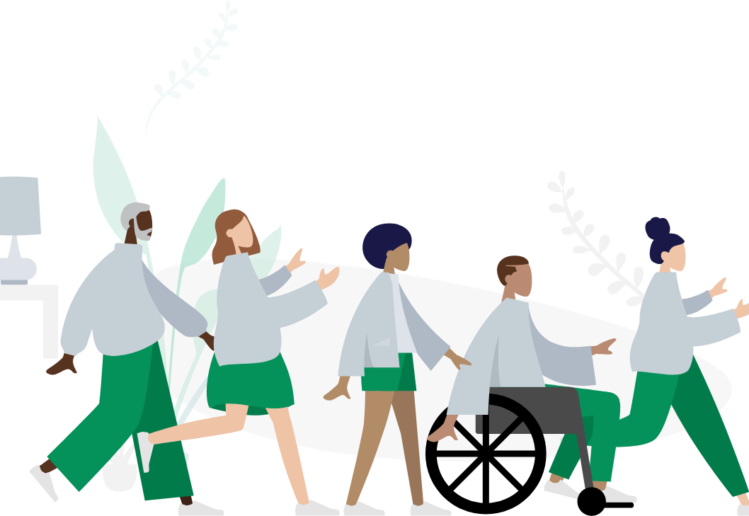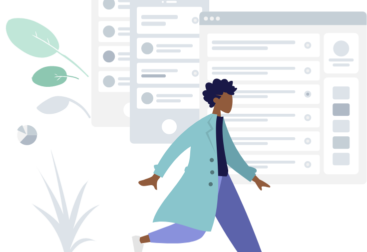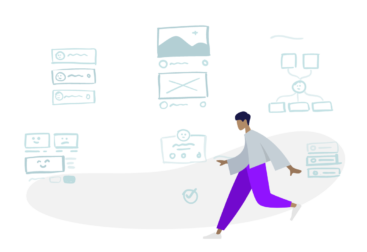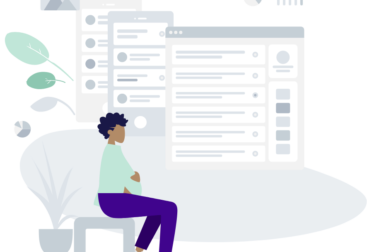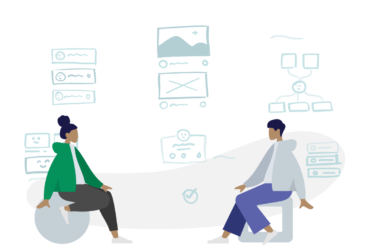I worked for a software company in education that hired teachers and principals who were familiar with their product as product managers, assuming they would know from experience which features would be the most successful. Because they used their own experiences and feedback from friends still in the industry to drive product development, they were only targeting features they believed were needed. When we compared their user base to the greater industry, we found the customers they attracted represented only 10% of the potential market.
Most users found it very difficult to use because it was designed by and for a small group of people. The team lacked diverse perspectives and a diverse user research pool and it was reflected in how the product looked and behaved. When a diverse group of individuals design a product together, perspectives and insights about your design will surface that wouldn’t be considered by a homogenous team. And while it may be easier to conduct user research within your own team and connections, ultimately your product will only target a narrow range of users.
The world is not homogenous; your research and design team shouldn’t be either.
Successful Products Start With Diverse Research
UX teams make data-driven decisions about design. We gather research through qualitative (person-to-person) and quantitative (numbers, metrics) data. Our qualitative data must be representational and provide the human element about our users that raw data will typically not capture. Quantitative data can show you that 40% of your users are abandoning a video within the first five seconds, but it will be the qualitative data that tells you why. Our design decisions should be rooted in user experience best practices and insights from prototypes that are tested on the broadest selection of users possible. It is absolutely essential that you understand the demographics of your market and recruit prototype, user shadowing, and workshop participants representationally.
Successful Products Require a Diverse Team
It might feel safe to hire people who think like you and who you agree with, but you pay the price in the long run for this short-term gain. Groups with no diverging opinions actually breed a stagnation of ideas and solutions. When you have a dominant culture in a team, and you don’t seek out alternate perspectives, you shut down disagreement. It will eventually lead to people “cloaking” and ultimately leaving the team. The confirmation bias that happens when everyone has a similar opinion about a solution also diminishes the importance of research data that goes against your assumptions.
When team dynamics are rooted in respect and curiosity, the natural friction that arises from conflicting perspectives is healthy, productive, and innovative.
The Accessibility-first Perspective
A diverse design team should also include team members who can represent the design needs of people with hearing or visual impairments or who are neuro-atypical. As Universal Design practitioners have demonstrated, considering these users first–instead of as an afterthought–creates a more equitable space for all.
The United Nations reports there is an estimated 1 billion people in the world today living with a disability. That is 15% of the world’s population, making them the largest minority in the world. Make sure your research pool includes people with visible and invisible disabilities in order to be representative. Test your prototypes with the accessibility community first. Very often, the guardrails that get put in place when you support screen readers, Braille readers, zoom functionality, and multi-media presentation of content end up making your design decisions easier. In my experience, targeting accessibility tools first creates a more elegant and user-friendly solution for all.
Broaden Your Lens
Even if your design team doesn’t come from a broad variety of backgrounds, you can broaden your worldview just by exploring the art of other cultures. Encourage your designers to read books by authors from communities outside their own. Set up a book club or discuss good TV shows or movies to share authors and programs that are authentic (not stereotypical) narratives from communities you aren’t familiar with. Use these windows into other cultures to challenge your assumptions about them and yourself.
Finding Talent in a Tight Market
UX Design is finally having its day in the spotlight. Organizations are realizing the ROI of design and ramping up UX departments practically overnight, yet the industry doesn’t reflect the representation that would allow all organizations to have a racially diverse team. According to the Design Census of 2019 by AIGA, 71% of the design workforce in the U.S. is European-American, 35% Asian-American, 8% Hispanic American and 3% African-American, with 5% reporting as belonging to one or more of those categories. There are now more women in design than men, although men continue to hold the majority of the leadership roles.
It can be difficult to attract top talent, especially if you’re building a diverse team and looking for a specific skillset and perspective. In this environment, it is essential to recruit applicants that have unconventional backgrounds or educations, and that have been overlooked by the competition. Many hiring managers might assume that older applicants haven’t kept up on their skills, but with an average tenure of just six years at a company, most experienced designers bring expertise in a range of skills along with modern processes and practices. They also typically entered the field through unconventional means, and bring a diversity of life experiences as well. The same can be said for people who didn’t pursue a formal education in design, but entered the field through an alternate path or who have been freelancing and consulting for a long time.
Confronting Unconscious Bias When Hiring
Diverse hiring practices start with diverse leadership and an HR department dedicated to DEIA (diversity, equity, inclusion, and accessibility) goals to ensure hiring practices are unbiased, holistic, and scrutinized. Many times, interviewers are looking for a “culture fit,” as much as they are skillset, meaning they want to find someone they can work with. This typically means someone with obvious similarities in dress, gender, and interests (because unconscious bias kicks in making us assume that if we are alike in one way, we are probably alike in other ways as well, i.e. “If I’m good at my job, and we are alike, then they will be good at this job.”) Unconscious bias makes us gravitate towards people who are like us, but more importantly, away from people who we decide aren’t like us, even when they are clearly the better candidate for the position. This is why it is crucial to have a diverse hiring team, and for hiring managers to be aware of and check their biases with standardized frameworks for evaluating candidates.
Tips for Building a Diverse Team
- Be prepared for friction at first by establishing rules of engagement. A diverse team means a variety of backgrounds, modes of expression, and interpretation of statements. Your team will be able to move through the forming and storming phases of group dynamics if you set ground rules for communication that establishes a culture of trust, safety, and assumption of good intent.
- Value diversity in perspective over checking a diversity hire box. There will be natural friction on a diverse team, and that’s okay. Don’t shy away from hiring someone because they won’t be a good “culture fit” and also don’t hire someone just to check that box. If you do not think they are the best candidate, it will be obvious in the way you treat them once they are there.
- Don’t assume someone doesn’t know something because of their culture (or age or gender). It’s best to ask questions from a place of interest, not confirmation. Everyone on your team wants to be challenged to grow, do good work, and to be acknowledged by the group for their contributions, regardless of their age, gender, sexual orientation, or country of origin. Distribute stretch assignments and menial tasks in an equitable way.
Keeping Diverse Talent
To be blunt, women, LGBTQ folks and people of color have experienced silencing, marginalization, and injustice in the workplace. Now that you’ve built a diverse team, you will need to make sure the culture in your organization supports them so that they stay.
- Be inclusive. Respect each others’ backgrounds, perspectives, and needs, and work to get to know each other on a personal level as well as a professional level. Make sure your team activities don’t accidentally exclude some people (sports events, happy hour at a brewery, and even BBQs will present challenges for some people).
- Listen to your Team. Do not create a hierarchy of people who have management’s ear and those who don’t. When someone says a design or its content is problematic, treat it as an opportunity to learn something new as a team.
- Establish transparent review processes. Many racial, cultural, and gender minorities are used to cloaking in the workplace and review time can be an extremely stressful time. Ensure your reviews are on performance and role expectations, not personality, appearance, or any other aspect of how they present themselves at work.
- Eliminate pay gaps and provide transparent pay bands. Racial and gender minorities historically negotiate a lower salary than white males do and are penalized when they do negotiate a top salary. Retain top talent by being transparent about pay bands and proactive about ensuring that everyone is paid fairly for the work they do.
